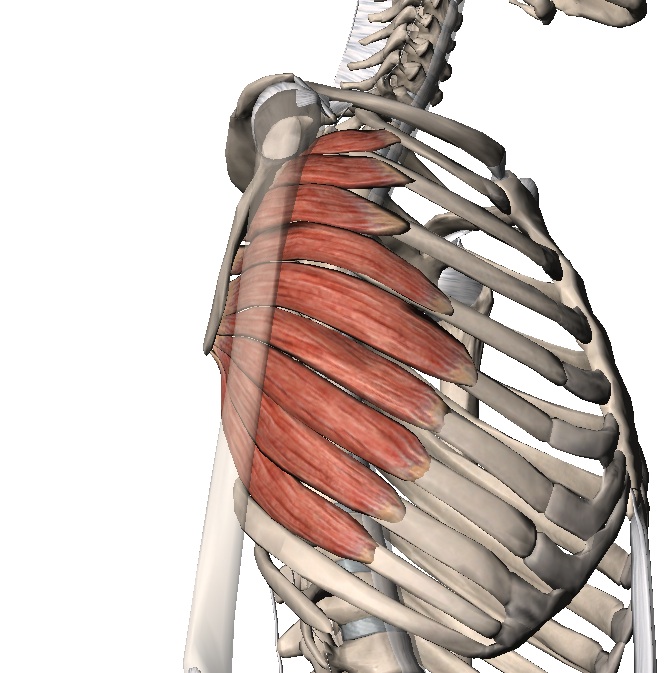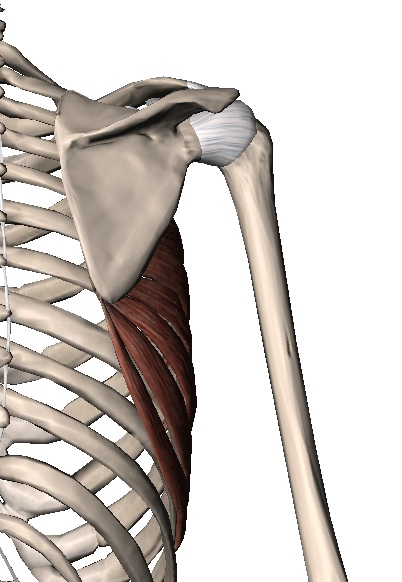Scapula stabilizer
The stabilizing muscles of the scapula allow the intimate retention of a ‘floating’ scapula behind the costal grill. We will consider successively:
- The anterior serrated muscle
- Trapezoid muscle (especially middle and inferior)
- the Rhomboid muscles as well as the scapular elevator muscle located under the trapezium.
- incidentally the small pectoral muscle (which is not the primary role) see dedicated page
Each will be addressed in a dedicated page, the destabilizing pathology is mostly found in the ‘scapula alata‘ (scapula ‘winged’ or winging scapula Anglo-Saxons) related to a detachment of the scapula (scapula) of the thorax
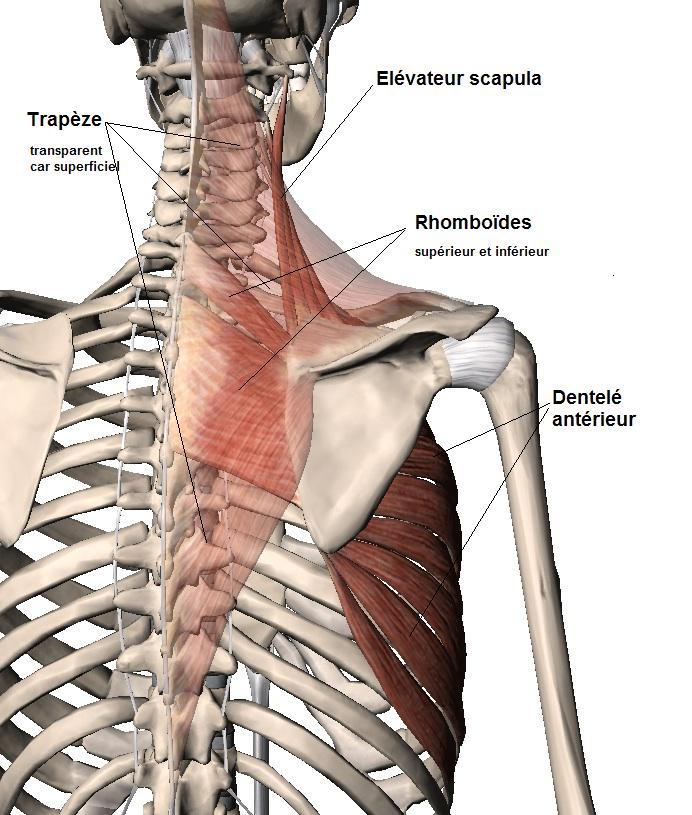
Otherwise called Serratus anterior in Latin (international nonproprietary name).
Description
Particular muscle if any, composed of multiple muscular bodies in the form of fingers = fingerings)
Origins: the first 9 ribs
Termination: the medial (internal) edge of the scapula (scapula)
Its role is to maintain the scapula against the costal grill (from which it is separated by sliding spaces) during the movements of the arm forward and upwards;
in the company of the other stabilizers of the scapula (Trapeze, Rhomboids, Elevator of the scapula, incidentally Small pectoral).
It is innervated by the long thoracic nerve (or nerve of Charles Bell) which comes directly from the brachial plexus.Its paralysis causes a form of detachment of the trunk scapula called ‘sacula alata’ (winged scapula or Winging scapula in English).
In reconstructive surgery it is used to cover loss of substance especially in the limbs (bone discovered), this concerns only the last 3 fingerings.
Trapeze
Called Trapezius in Latin (international naming)
Muscle of the upper and inner relief of the shoulder, it can separated into three parts (upper, middle and lower).
Origin:
neck and occiput for the upper part, cervical (C1 to C7) for the average, thoracic vertebrae (T1 to T12) for the lower part.
Termination:
Back to front lateral third of the clavicle, acromion and spine of the scapula (scapula).
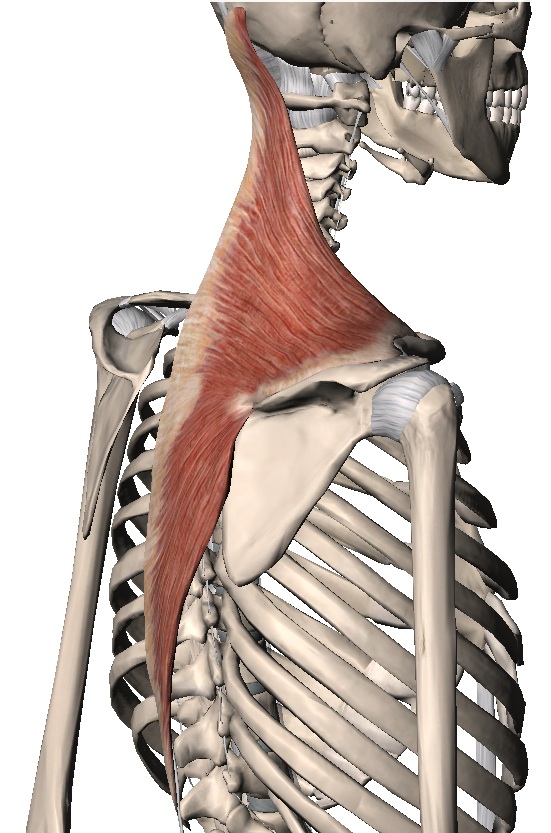
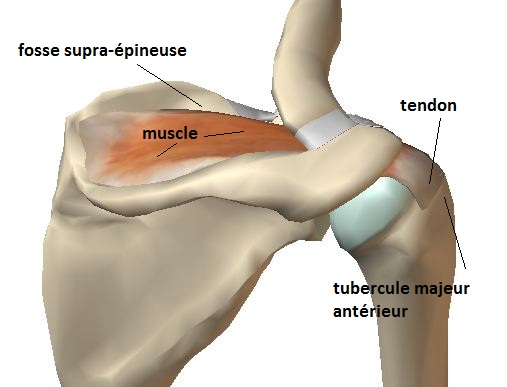
innervation:
By the accessory spinal nerve which is a ‘crni’ nerve (eleventh pair of nerves coming directly from the cervical cord and crossing the cranium through orifices). This nerve is superficial in the neck through the sterno-cleido-mastoid muscle.
Function:
Adductor, suspensor, depressor and external rotator of the scapula

